SUMMARY
This is AI generated summarization, which may have errors. For context, always refer to the full article.
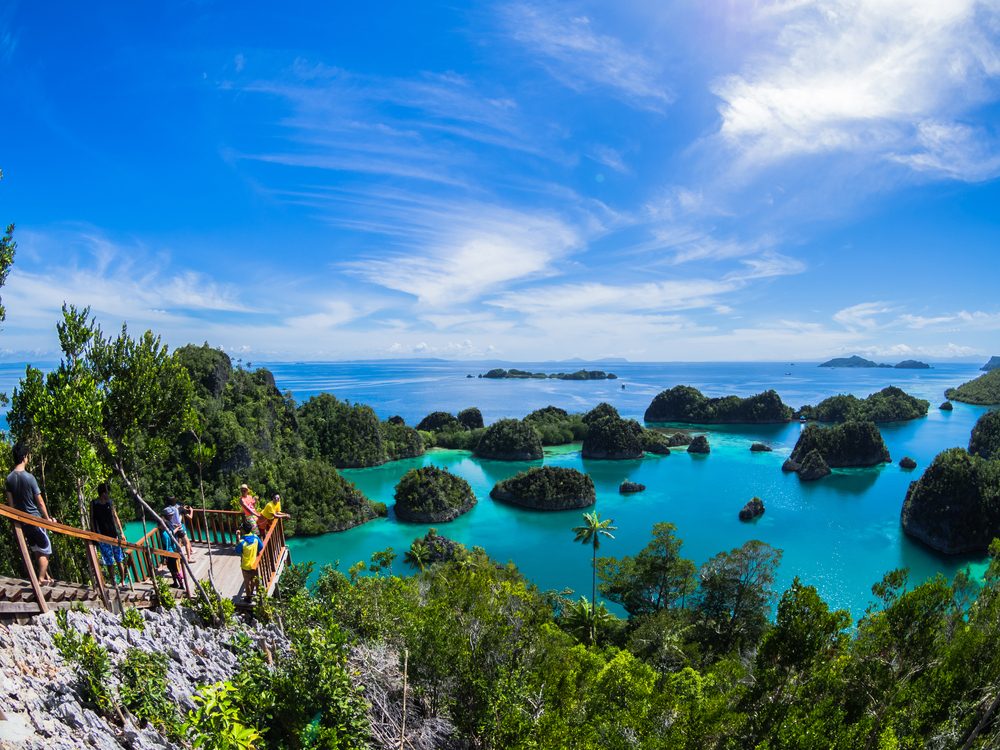
An endless supply of coconuts, songs of local villages, fresh seafood and mesmerizing marine life to snorkel or dive in – it is the simplest thing in the world to ease into an island life in Indonesia.
We reached Raja Ampat on a balmy summer evening after two flights, a bus ride and two boat rides on a single day. But hey, nobody said reaching the nicest places on earth was easy.
Every minute is, however, worth it.
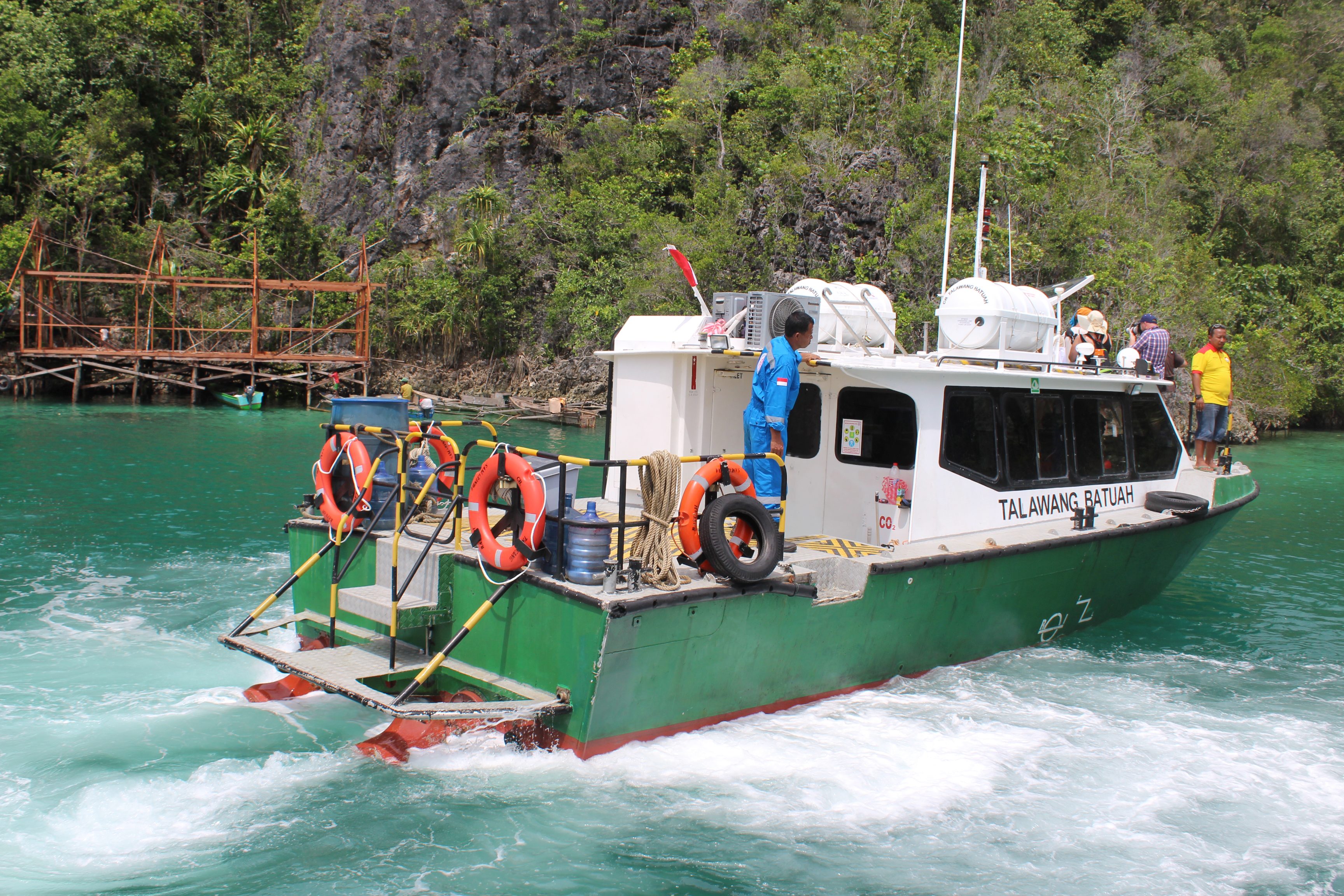
Raja Ampat islands is a group of 1,000 islands just off Sorong, in the eastern Indonesian province of Papua. The jungle covered islands, hidden lagoons, spooky caves and unusual mushroom-shaped islets are some of the most magnetic reasons for pulling tourists from across the world to this place. Unbelievably, it has all been discovered just a few years ago.
Getting to Raja Ampat from Jakarta, Bali or Yogyakarta
We took Garuda Indonesia flight to Makassar from Yogyakarta and after a short transit stay, took another one to Sorong. Flights from Jakarta and Bali fly to Makassar too.
From Sorong airport to get to the port, a 20-minute taxi ride is available for $10. You can also get on a motorbike for $2 if you have fewer bags. Or even 50 cents if you can walk up to the main road and bunk onto a mini bus (bimos in local language). Once you reach the port, public ferries plying to Raja Ampat cost about $10 and take you to Waigeo, which takes about 2-3 hours.
Pro tip – Avoid getting here on Sundays or depart on Sundays because mostly all boat transfers will be shut for religious reasons.
Where to stay
The 4 biggest islands here are Waigeo, the capital of which is Waisai; Batana; Salawati and Misool. The Dampier Strait between Waigeo and Batana has many outstanding dive sites, so most accommodation options are on Waigeo, Batana or 3 smaller islands between them: Kri, Gam and Mansuar.
We stayed at Raja Ampat Dive Lodge (RADL), which is at the southern tip of Waigeo, and the package included a pick-up from the harbor. Most of the homestays you book with, will offer pick-ups so make sure to avail of that beforehand.
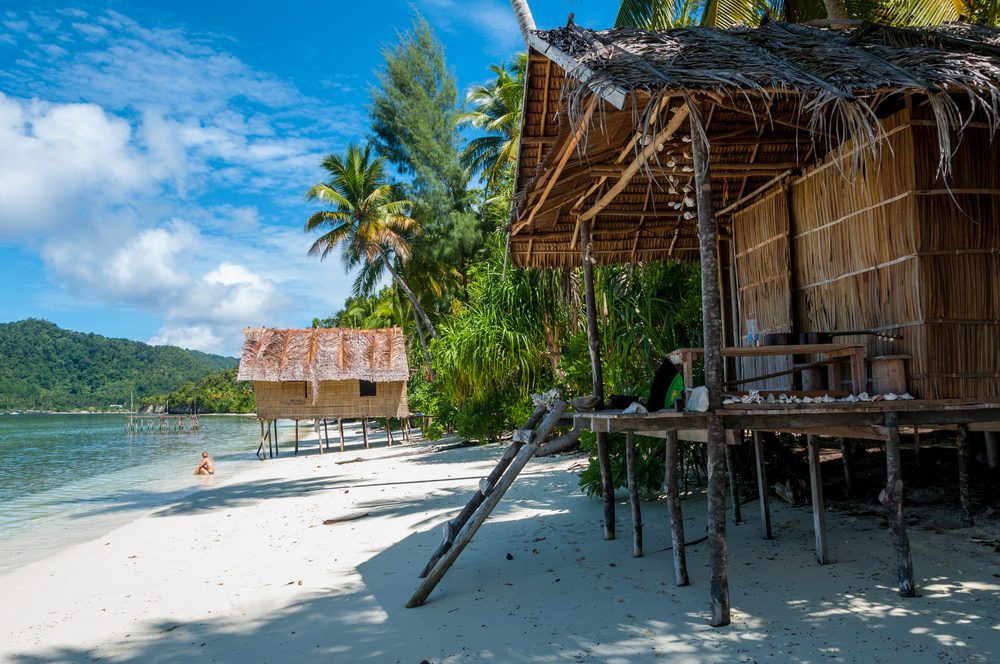
What to do: Day 1
The first glimpse of the resort was from a long converging water bridge where the boat halted. We arrived at RADL around 4:30 pm – an isolated resort at the southern tip of Waigeo, sitting under a dense forest hill. Taking full advantage of the daylight we went snorkeling – directly accessible from our traditional bamboo beach bungalows.
Snorkeling near the resort is however just a teaser for what is to come around the island.
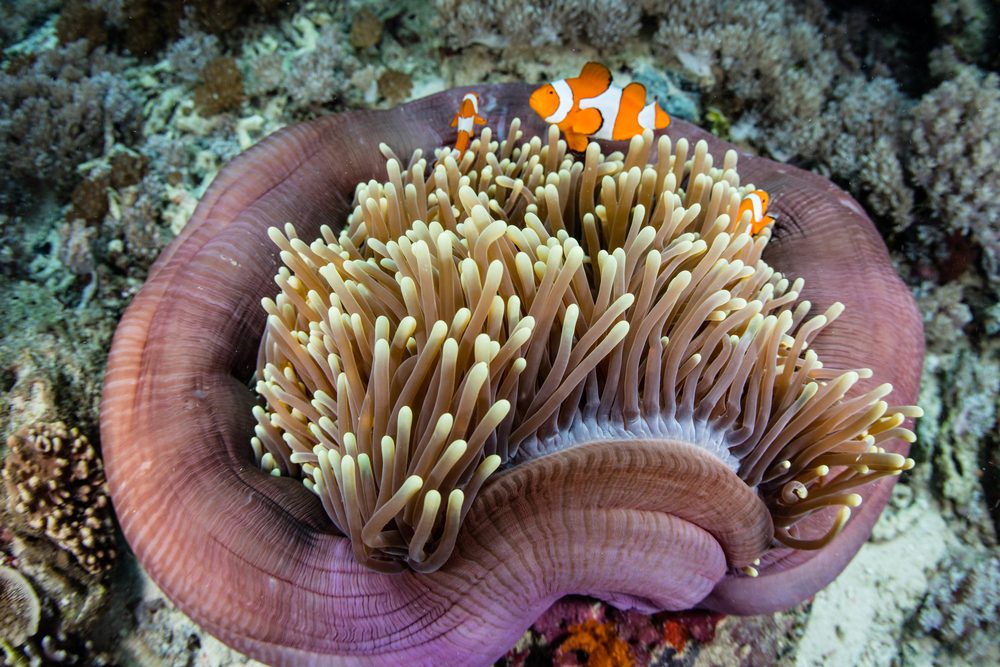
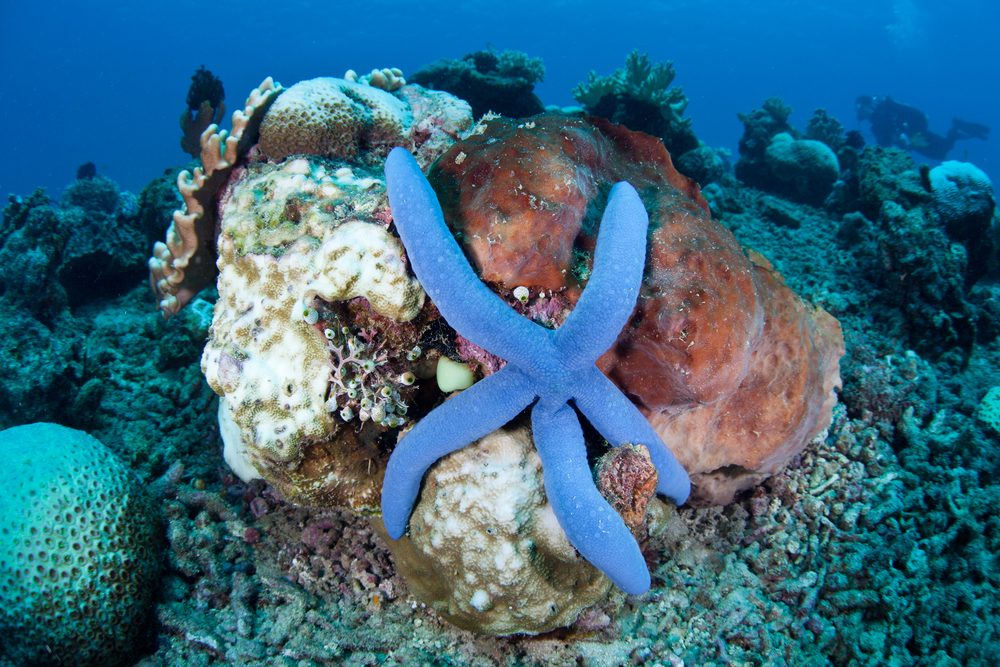
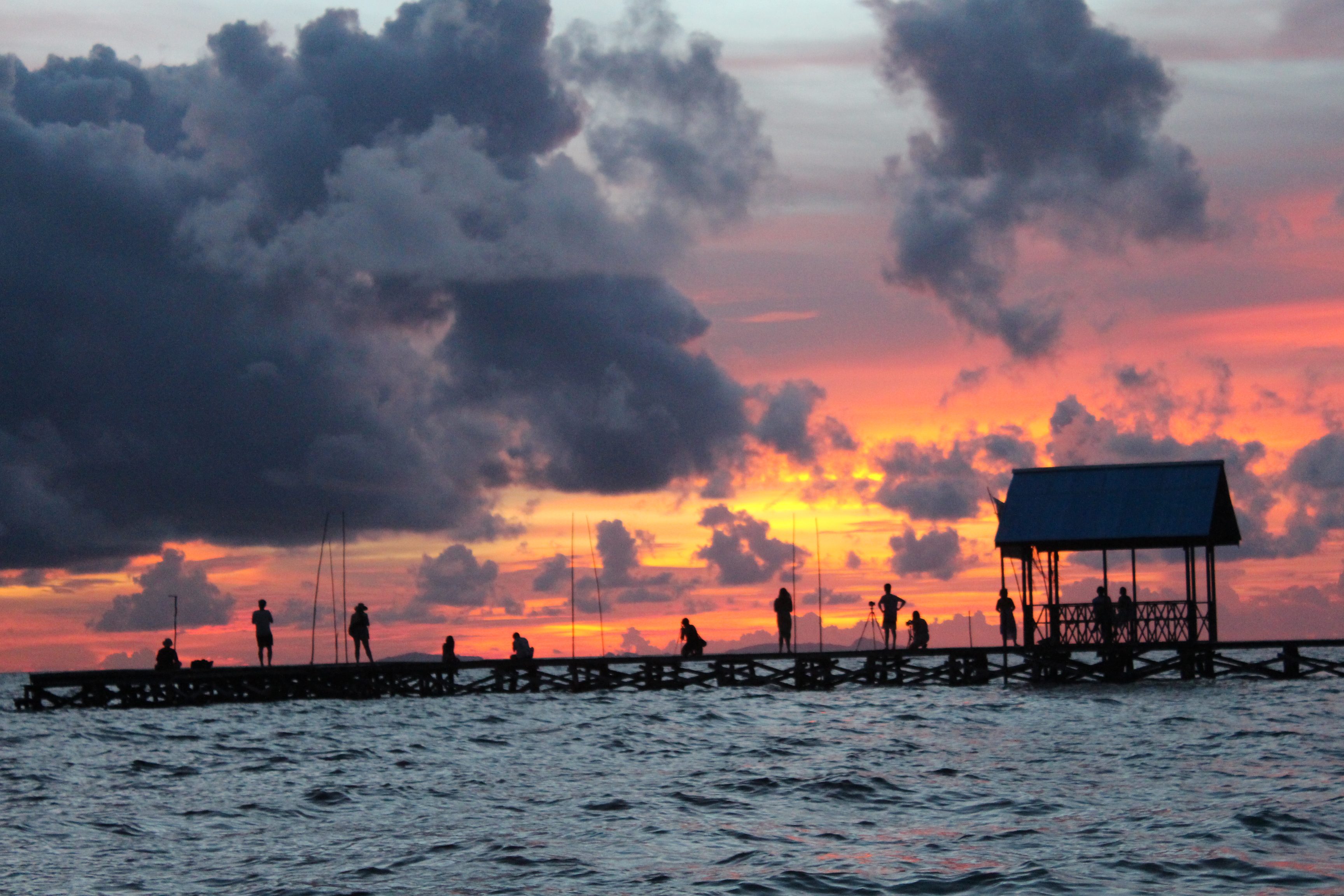
The long day ended with a spectacular view of the sunset, which we discovered is unique every day. Make sure to enjoy it with a side of Bintang beer pints and nibbles of fresh fish.
What to do: Day 2
The next day we woke up to the sounds of the waves and a call confirming our boat was ready for the day trip. The weather was perfect to discover the islands nearby.
The Arborek village was the first thing on our list of activities. The village community here – a total population of only 197, has been engaged in marine conservation. We spent about 3 to 4 hours here, shopping for local handicrafts like hats and string bags, playing with the kids, and diving.
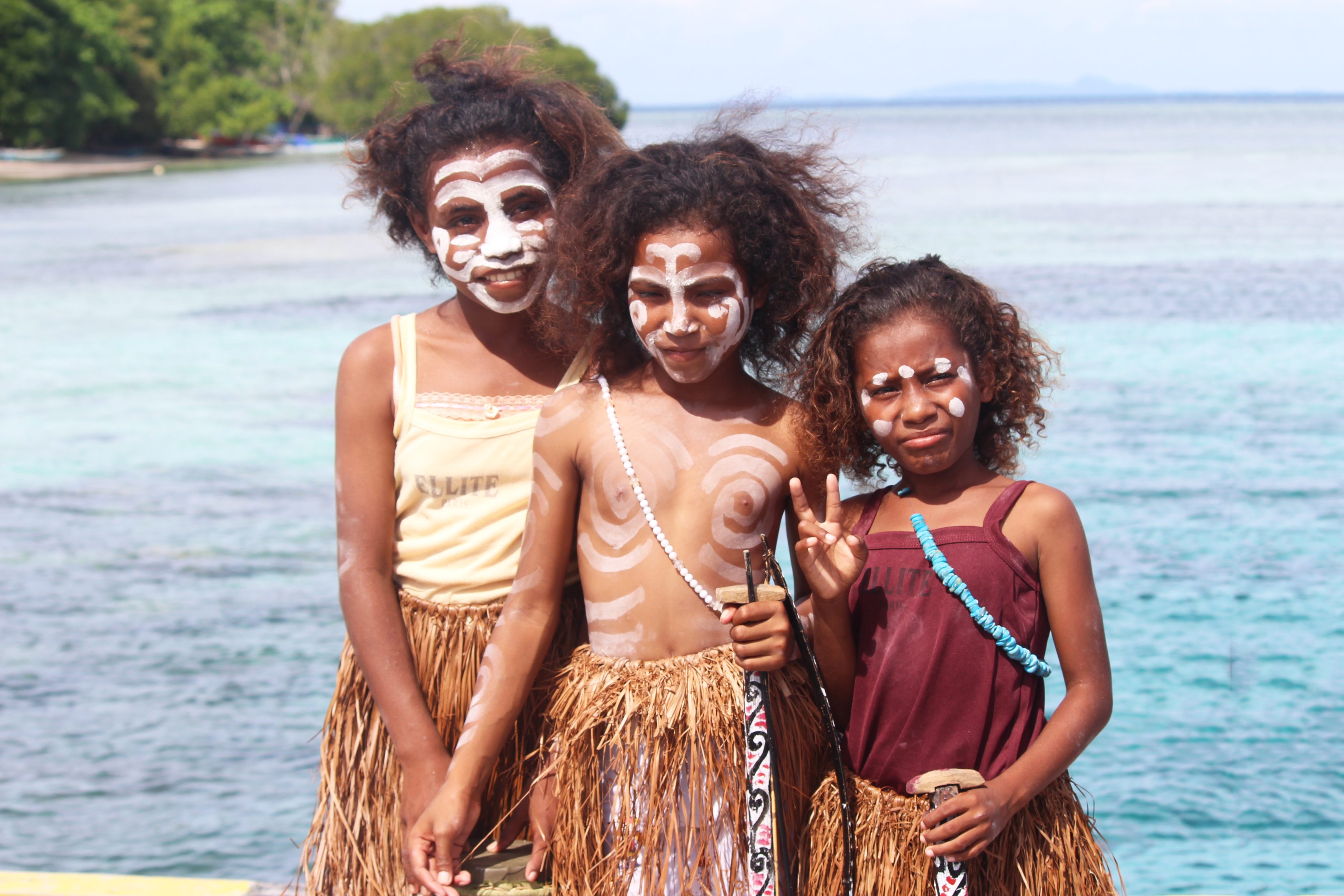
After lunch we headed to Pasir Timbul, which is an emerging island that disappears during the high tide and has the most clear water and white sand you will ever lay your eyes on. We got there at 2:30 pm and stayed for 2 hours. This is probably the best time to visit during the day. From a drone view, it looks like a spec on the ocean.
We were back to RADL early so we could get up at 4:30 am the next day for a trip to Sawinggrai village.
What to do: Day 3
Bird watching in Sawinggrai village is a great way to begin the day.
Using a torchlight while following our guide (since it was still pitch dark), the only sound of heavy chirping of indigenous birds of the region kept us awake. At the first ray of light we spotted the Red Bird of Paradise, which is most common here. The other 3 species here are Wilson’s Bird of Paradise, the Lesser Bird of Paradise and the Greater Bird of Paradise. These birds are only found in two places on the planet, both small islands in Raja Ampat.
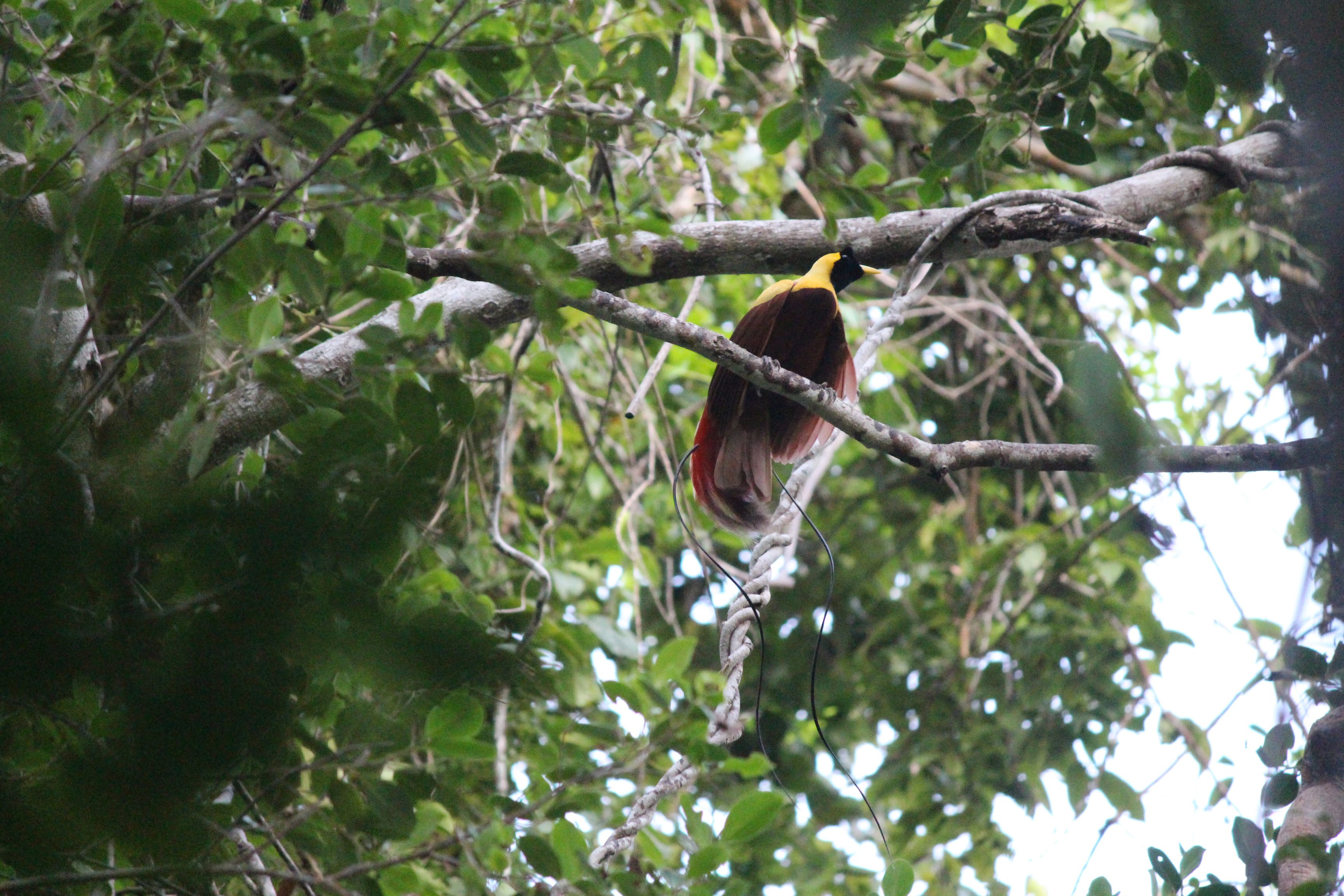
After a thorough bird watching session of 3 hours, we were famished and ate our breakfast picnic quickly. Our plan was to get back to the resort for some swim and sleep but we were now fully awake and decided to continue our trek to Pianemo in one go.
Pianemo gives the best view of Raja Ampat’s coral islands – every shape and size seen from a cliff top is nothing short of breathtaking. From the top of the hill, we enjoyed the view of the turquoise lagoons, which I believe is unmatched in Southeast Asia.
Planning your trip
Most activities are arranged by homestays or in our case – RADL for an extra cost and you can pre-plan your vacation at Raja Ampat hassle-free.
Filling in the gaps during the day are sunsets, sunrises, never-ending time spent snorkeling and diving, chatting away with friendly locals and happily snapping around. There is a lot more to Raja Ampat but these are some of the best things to begin with.
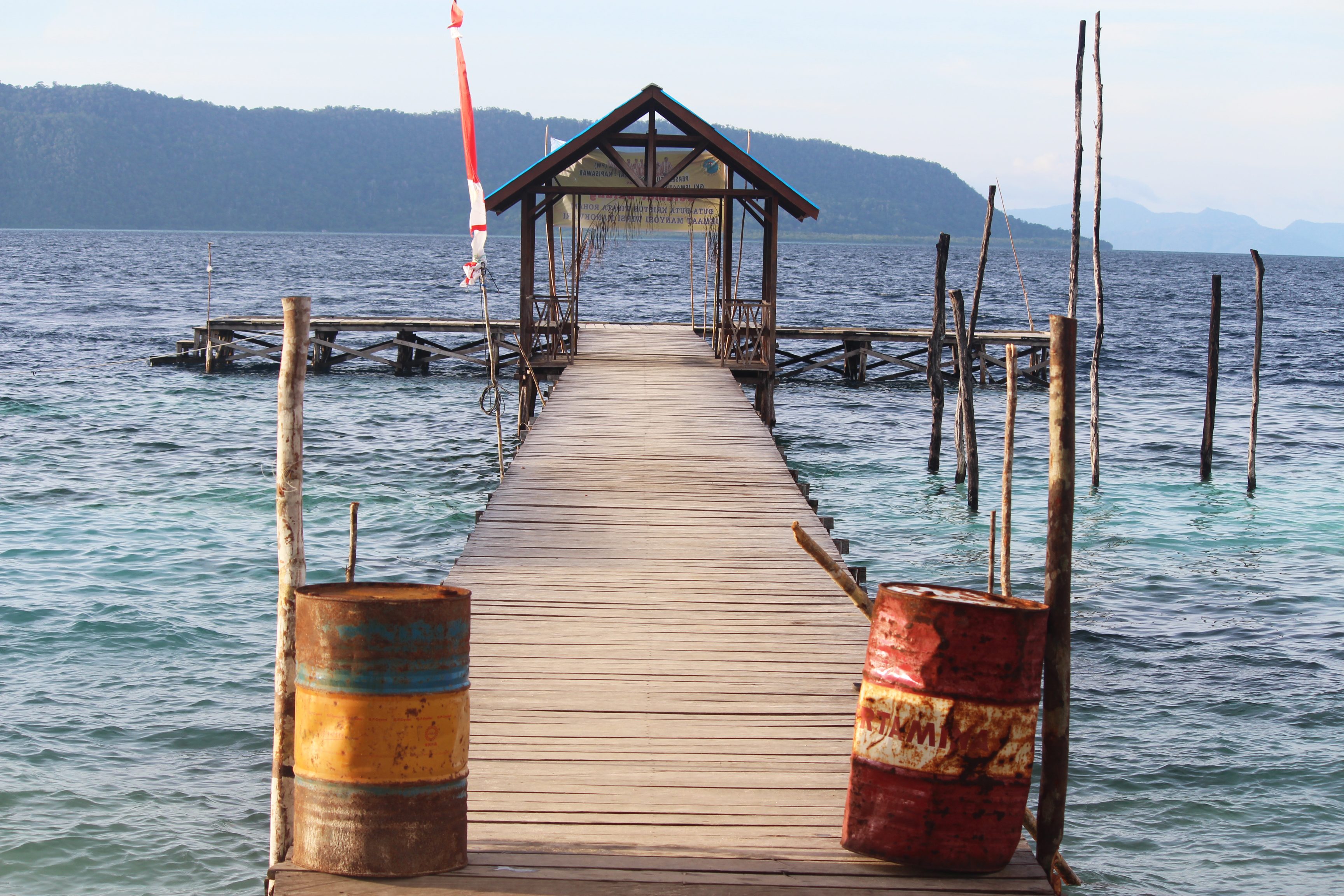
Highlights of Raja Ampat
1. Swim/Snorkel and enjoy the largest variety of marine species in the world. The lionfish, corals, nemo fish, black tip sharks are all common sights.
2. Visit the Arborek village, which has a population of only 197, where kids will sing to you and you can talk to them and interact all you want. They actively participate in conservation of marine life.
3. Go on a bird watching tour in Sawinggrai village at 4.30 am in the morning, where the red bird of paradise and other native birds welcome you.
4. Trek to Pianemo to view the coral islands from a cliff and then spend the day discovering the coral island.
5. Get to Pasir Timbul – an emerging island that disappears during the high tide and has the most clear water and white sand you will ever lay your eyes on. – Rappler.com
This piece is co-written by Apeksha Harihar and her husband Vishal – travel writers and photographers, who document their journeys on www.thing2gether.com. All photos are courtesy of the couple.
Add a comment
How does this make you feel?
There are no comments yet. Add your comment to start the conversation.